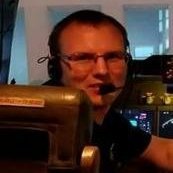
By Simon Kelsey
Contributing Editor
You’ve arrived at the gate, the engines have spooled down, you’ve completed the shutdown checklist and all your virtual passengers are headed down the jet bridge. Hours noted in your logbook, perhaps, or virtual airline PIREP filed. Job done, right?
Of course, in our simulated world that can absolutely be the case, and there’s nothing wrong with that: after all, we’re doing this as a hobby and if all you want to do is shut down the PC and move on to something else, that’s fine.
The virtual airline I belong to had a conference a couple of years ago at which one of our members – a retired Boeing 747 captain – gave a talk about his career. “You are all pilots,” he said, “because whether you do it for real or not, you all think like pilots.” And I think he was right: perhaps one of the aspects of this hobby which is so addictive is the fact that there’s always something new to learn, no matter how long you’ve been at it.
And so we keep coming back, and we keep seeking out more complex models, more faithful representations of aircraft and their quirks, more realistic weather simulations, more detailed and immersive scenery packages – because those of us who have been at this for any length of time have likely come to the realisation that there is no such thing as the ‘perfect flight’.
There’s always something which could be bettered – that switch we forgot to actuate at just the right moment, the slightly bumpy landing, the non-precision approach not quite nailed, the continuous descent from cruise not quite achieved without using just a touch of speedbrake or a squeeze of thrust somewhere – the list is endless.
And, of course, because we have the mindset of the pilot – an insatiable thirst for greater knowledge and a desire for ever-greater mastery of the art and science that is aviation – we have to keep going back to try again in an effort to improve our performance.
Self-critique – the ability to review a flight, identify the good bits, the bad bits and the downright ugly bits and work out how to replicate what we did well and fix what we did badly – is a valuable skill in the real flight deck. But it is perhaps even more essential to the sim pilot, who is unlikely to have the benefit of advice from an instructor or a senior colleague sitting next to them. In the sim world, it is largely up to us to teach ourselves by trial and error.
In real life, many airlines incorporate a post-flight review, where the crew will discuss the flight they have just completed, as standard practice. The same principle may also be applied to our simulated flights as we strive to further increase our knowledge and proficiency.
The first step is to identify what happened and, most importantly, why? Of course, the objective here is to pick out key events – both good and bad – and establish their root causes.
Next, for each event determine – was the outcome positive or negative? If it was positive – what did you do? How could you repeat that performance next time? If negative – how could it be avoided?
It is important at this point to stress that it is just as vital to understand why something worked well as it is to know why something else went badly. After all, if you don’t know how you managed to achieve success, how will you be able to replicate that success in the future?
Other points for consideration could include the impact an event may have had on safety margins, or, for those simulating airline flights – would there have been any commercial impact? Did you know and follow the correct procedures as per the flying manuals and company policies throughout? If not, why not? You could, perhaps, make a note to look up the details in the appropriate documentation. Finally, consider what you have learned as a result of the flight, and how you might put these points in to action on your next flight.
Aviation has a long history of open dialogue. Many flying magazines have an “ILAFFT” – “I Learnt About Flying From That” – column where pilots are encouraged to send in their experiences and mishaps so that others may avoid falling foul of the same traps. Likewise most real airlines have some form of in-house safety reporting system, something which we’ve introduced in the sim world within my virtual airline – a form where pilots can anonymously send in experiences they might not, for whatever reason, otherwise be prepared to put their name to in the forum. Our training team are then able to add their comments before the whole thing is pulled together in to a newsletter which has proven popular and thought-provoking.
The forums here at AVSIM are an excellent source of discussion and knowledge. The number of questions posed daily on all aspects of aviation – simulated or real – and “ILASFT” (I Learnt About Simming From That) type of posts demonstrates the level of passion and desire to gain and share wisdom. For whether we do it for real (be that in a Boeing 747 or a Piper Warrior), or simply soar virtual skies on electronic wings, the thing we all have in common and the drug that keeps us coming back for more is the endless pursuit of aviation greatness.
-
 11
11






Recommended Comments
There are no comments to display.
Create an account or sign in to comment
You need to be a member in order to leave a comment
Create an account
Sign up for a new account in our community. It's easy!
Register a new accountSign in
Already have an account? Sign in here.
Sign In Now